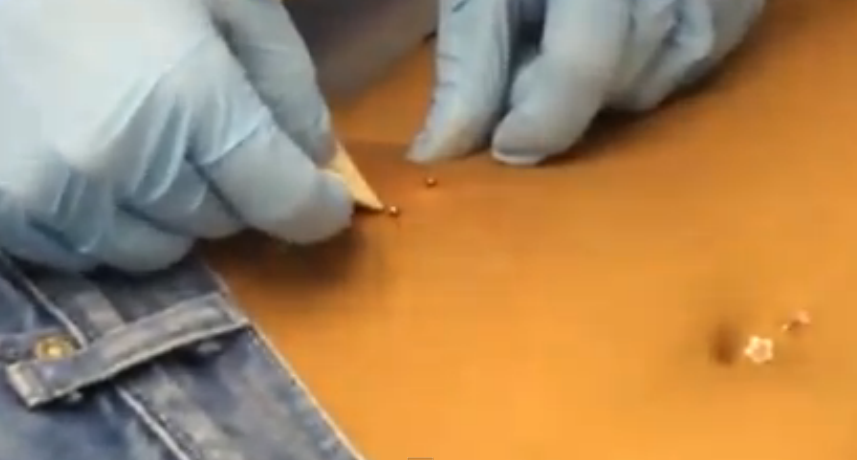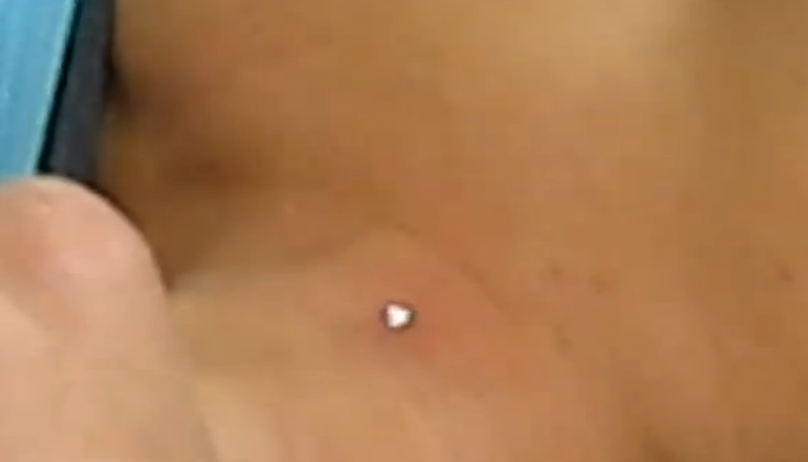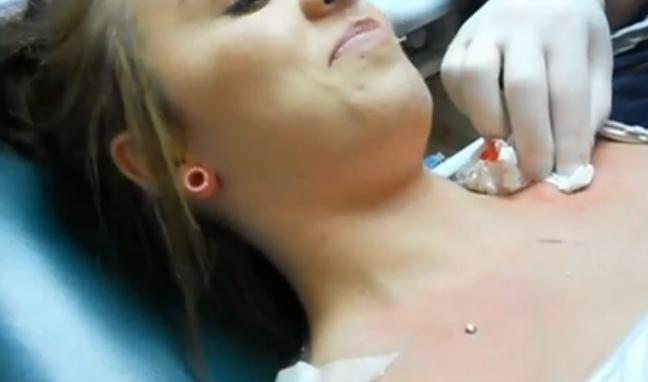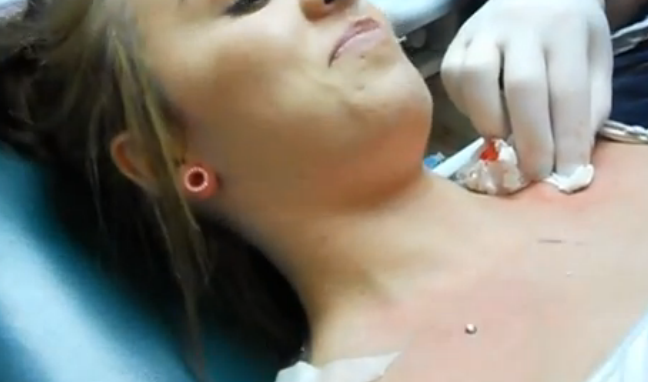Dermal piercing refers to a type of body piercing that is fixed on flat areas of the body. It is also referred to as single point piercing or microdermal piercing.
It may however be noted that dermal piercings are not the same as other surface piercings. Just like other kinds of normal body piercing, the latter has exit and entry points for the jewelry pieces. As opposed to this, only one end of the embedded jewelry is visible in case of dermal piercing, while the other end is installed within the dermal skin layer. This results in an appearance of tiny beads growing on the skin surface.
Dermal piercing has become quite a rage because it allows jewelry pieces to be fixed on almost every flat surface of the body. This also provides an additional advantage with regards to piercing those areas of the body that cannot be embellished with normal piercings.Additionally, people can make patterns on the body with many dermal piercings. A dermal piercing jewelry can also be placed on the fingers. A finger dermal piercing is popularly called a dermal ring.
Dermal piercings are widely used to bejewel and adorn the ears, around the eyes, and on the lower back, fingers, face, neck, and wrist.
Dermal Piercing Procedure
There are two ways in which a dermal piercing can be carried out, i.e., via a dermal punch or with the help of a needle.
Dermal piercing through a needle
It is an almost similar procedure as other traditional piercing methods. However, in dermal piercing via a needle, the piercing artist will make a pouch shaped like ‘L’ instead of only a hole. The site of dermal piercing is first sterilized with the help of a surgical scrub, before the piercing is carried out. Then the pouch is cut out on the skin surface.
- The pouch will house the anchors and the base plate of the dermal piercings. They are carefully lodged into the pouch with the aid of forceps. Later, your choice of jewelry is screwed on top of the plate.
- Dermal piercing using a needle is a comparatively difficult procedure and can only be carried out by a professional expert. He/she has the necessary training, skills, and expertise to carry out the procedure without any problems.
- It may also be noted that special types of needles are used in this type of dermal piercing procedure. The needles come in varied sizes, and the right one is chosen as per the site of dermal piercing and the skin anatomy of the client.
Dermal piercing using a dermal punch
It is similar to dermal piercing via needles. However, the method of making the pouch is not the same. When using needles, the pouch is created by removing the skin; while in case of dermal piercing via dermal punch, the ‘tissues’ on the piercing site are separated to create the pouch. After this, the artist will place the base plate and the anchors, and then the preferred piece of jewelry.
- Dermal piercing carried out through a dermal punch is preferred by customers as it is safer and less painful as compared to using needles. It also has a safeguard mechanism which prevents the piercing from going deep inside the skin.
- It may however be noted that use of dermal punch is illegal in some regions. Hence, in such places, dermal piercing is carried out with the help of needles.
Aftercare for dermal piercing
- After the dermal piercing procedure is over, the technician will cover it with a dressing which can be taken out after 3 to 5 hours. Facial dermal piercings are however not dressed. You may also cover the dermal piercing site with a bandage for the first few days so as to avoid damaging or irritating it.
- Dermal piercings tend to fully heal in one to 3 months. During this period, you must take care to avoid disturbing or accidentally causing injury to the piercing. Avoid moving the piercing. It is also possible for the piercing to get caught in clothes or towels. Hence, take care when wearing clothes or drying the body.
- The site may be cleaned with a lukewarm salt solution on a daily basis. Also, do not use sprays or lotions on the dermal piercing.
- It is important to consult a professional for removal of dermal piercings. Avoid removing it on your own.
Dermal Piercing Risks
- One of the main risks of dermal piercing is tissue damage. If the piercing is not installed properly, then it can damage the blood vessels and nerves present in the dermal layer of skin. Shallow installation can cause the piercing to move, while excessively deep installation can cause the skin layers to be pulled together.
- Uncared for dermal piercings are at a greater risk to bacterial infections, inflammation, and oozing of pus.
- The body may also reject the piercing and cause skin inflammation. Hence, use titanium for dermal piercings as it has the least rate of rejection.
- Scars may develop at the site after a dermal piercing is surgically removed.
Dermal Piercing Prices
The price of the procedure depends on the area you live in, the body part on which you will apply the dermal, the reputation of the salon or the shop. On an average, the price for dermal piercing is $75-$100.
Dermal Piercing Pictures





